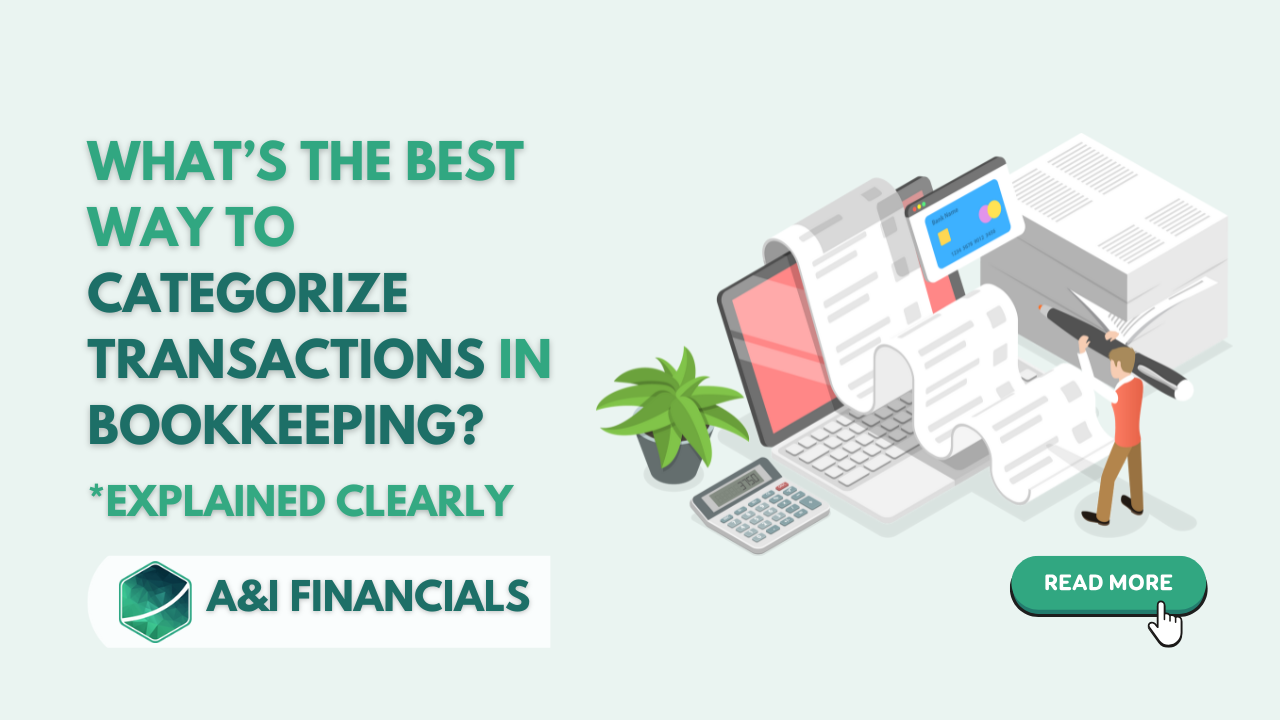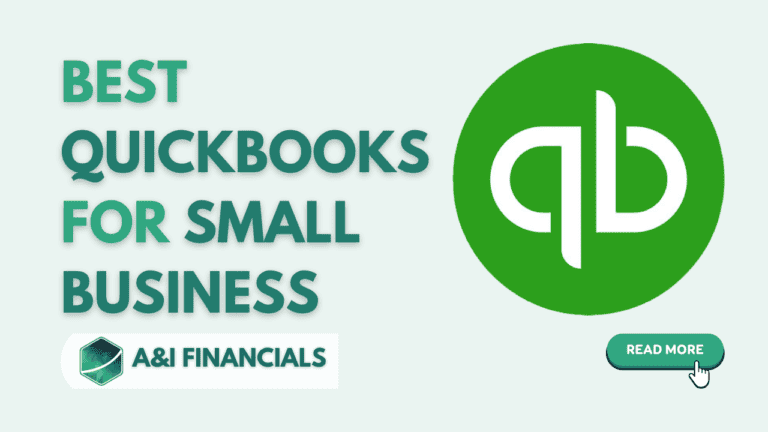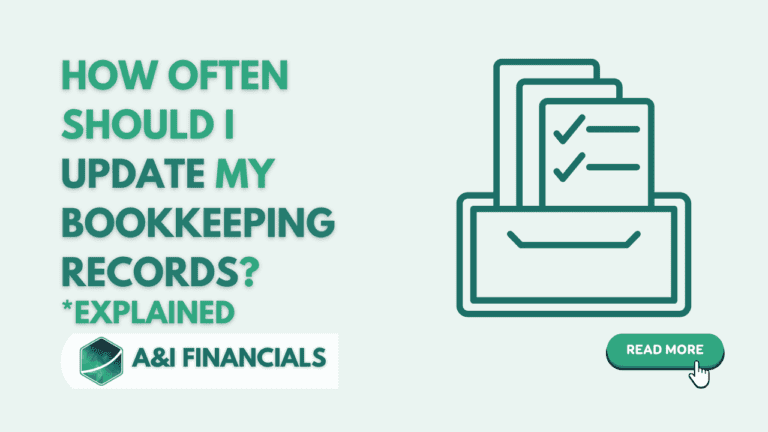What’s the Best Way to Categorize Transactions in Bookkeeping?
Bookkeeping can seem like a chore, right? But if you know what’s the best way to categorize transactions in bookkeeping, it becomes much simpler. Think of it as sorting out your closet – you wouldn’t just throw your shirts, pants, and shoes into one pile. Instead, you’d organize them into categories so that finding what you need is a breeze. The same idea applies to bookkeeping. When you categorize your financial transactions effectively, it makes managing your finances easier, saves time, and helps keep your business on track. Let’s dive into how to make transaction categorization a piece of cake.
Why Categorizing Transactions Matters
First things first, why should you even bother categorizing your transactions? The answer is simple: organization, accuracy, and insight. When you categorize your financial transactions, you can track your business’s expenses and income better, making it easier to see where your money is going and where it’s coming from. This isn’t just helpful for day-to-day operations; it’s crucial for tax preparation, budgeting, and even cash flow management. Plus, if you ever get audited, having everything neatly categorized will be a lifesaver.
So, how do you start? Let’s walk through the best practices step by step.
Start with the Chart of Accounts
The backbone of effective bookkeeping is a chart of accounts. Think of it as the master list of all the categories you use to track your business’s finances. The chart of accounts includes all the different types of income and expense categories, such as sales revenue, rent, utilities, and office supplies.
Your chart of accounts should be specific enough to track what matters but not so detailed that it becomes overwhelming. For example, rather than just having a general “expenses” category, break it down into subcategories like “marketing,” “utilities,” or “employee salaries.” This way, when you’re categorizing each transaction, you’ll know exactly where it belongs.
Common Bookkeeping Categories
While every business is unique, there are some common bookkeeping categories that most small businesses should use. These categories can help keep your financial records management consistent and straightforward.
Expense Categories in Bookkeeping
- Office Supplies: This covers pens, paper, and other office materials.
- Utilities: Includes electricity, water, internet, and other utility expenses.
- Marketing and Advertising: Costs associated with promoting your business.
- Employee Salaries: Wages paid to employees.
- Rent: Payments for office or warehouse space.
- Travel and Entertainment: Expenses for business travel and client meetings.
Income Categorization
Income categories are just as important as expenses. You’ll want to track different types of income to understand your revenue streams clearly.
- Sales Revenue: Money earned from selling products or services.
- Interest Income: Earnings from bank interest or investments.
- Rental Income: Money made from leasing property.
By using these categories, your bookkeeping will become a lot more organized, and you’ll be better prepared for financial statement preparation.
Manual Bookkeeping Categorization vs. Automated Categorization Tools
Now, you might be thinking, “Do I have to do all this by hand?” Not necessarily. There are two main approaches to categorizing transactions: manual bookkeeping categorization and using automated categorization tools.
Manual Bookkeeping Categorization
The old-fashioned way involves doing everything by hand. This means manually entering each transaction and deciding which category it belongs to. The upside? You get total control over every detail. The downside? It can be time-consuming and prone to human error.
Automated Categorization Tools
Today, most people use accounting software categorization to make life easier. Tools like QuickBooks, Xero, or FreshBooks can automatically sort transactions into categories for you. These tools learn from your past categorizations and make suggestions, saving you time and reducing errors. However, you’ll still need to double-check their suggestions since even software can make mistakes.
The Role of Accounting Software in Categorization
If you’re running a small business, using accounting software is a no-brainer. It’s like having a personal assistant that helps with your expense tracking, income tracking, and even accounts payable and receivable. These tools can automatically import transactions from your bank and categorize them based on rules you set up.
Pros of Using Accounting Software
- Time-Saving: Automates repetitive tasks.
- Reduces Errors: Helps avoid common bookkeeping mistakes.
- Cash Flow Management: Easier to monitor the inflow and outflow of money.
Cons of Using Accounting Software
- Learning Curve: Can take some time to get used to.
- Subscription Costs: Most accounting software isn’t free.
- Software Errors: Sometimes, transactions might be categorized incorrectly.
Regardless of whether you choose to go manual or automated, the main goal is the same: to ensure your financial data is organized in a way that reflects your business operations accurately.
Understanding Different Transaction Types
In bookkeeping, transactions are typically divided into two main types: income and expenses. Each type is further categorized based on its nature.
Income Transactions
Income transactions record any money that flows into your business. It’s important to classify these correctly to get an accurate picture of your revenue. This helps in financial statement preparation and understanding the different revenue streams of your business.
Expense Transactions
Expenses track money going out of your business. These can be further divided into categories such as business expenses, utilities, and employee salaries. Classifying expenses accurately ensures your financial records management is top-notch, making tax season much less stressful.
Bookkeeping Practices to Categorize Transactions Effectively
Effective bookkeeping practices ensure that your categorization process is as smooth as possible. Here are some tried-and-true tips for getting it right.
- Consistency Is Key
One of the golden rules of bookkeeping is to be consistent in how you categorize transactions. If you categorize a certain type of expense under “Office Supplies” one month, don’t put it under “Miscellaneous” the next. Consistency makes it easier to spot trends and ensures accurate financial reporting.
- Review and Reconcile Regularly
Don’t wait until the end of the year to review your financial data. Make it a habit to reconcile your accounts at least once a month. This will help catch errors early and make adjustments as needed.
- Don’t Overcomplicate the Chart of Accounts
While having detailed categories can be helpful, don’t go overboard. Too many categories can make your bookkeeping process cumbersome. Aim for a balance that gives you insight without overwhelming you.
- Use Subcategories When Needed
Subcategories are a great way to break down expenses further while still keeping things organized. For example, under “Marketing and Advertising,” you might have subcategories for “Online Ads” and “Print Media.”
- Stay Updated on Accounting Standards
Accounting standards can change, and it’s essential to keep up-to-date with them. This ensures that your categorization practices are aligned with accounting principles and accounting standards, keeping your books accurate and compliant.
Why Accurate Bookkeeping Matters
Having your transactions categorized correctly isn’t just for your peace of mind. It has a significant impact on your business’s overall health.
- Tax Preparation Made Easy
When tax season rolls around, you’ll be thankful that you took the time to categorize your transactions properly. It will make it easier to identify deductible business expenses and reduce your tax bill.
- Better Cash Flow Management
Categorizing transactions allows you to see where your money is going. Are you spending too much on non-essential items? Is there an opportunity to cut costs? With proper categorization, you can improve your cash flow management.
- Insightful Financial Reporting
Whether you’re preparing a profit and loss statement or a balance sheet, having categorized transactions will provide clearer insights into your business’s financial health.
Bookkeeping Mistakes to Avoid
There are some common pitfalls that business owners fall into when categorizing transactions. Here’s what to watch out for:
- Mixing Personal and Business Expenses
Never mix personal expenses with business expenses. Doing so can complicate your bookkeeping and cause problems during tax preparation.
- Using Too Many Miscellaneous Categories
The “Miscellaneous” category is not your friend. It’s tempting to dump transactions into this category when you’re not sure where they belong, but doing so can create a mess that’s hard to untangle later.
- Failing to Reconcile Regularly
If you don’t reconcile your accounts regularly, you risk having errors that go undetected. This can lead to inaccurate financial reports and potential compliance issues.
How to Categorize Transactions for Small Business Bookkeeping
For small businesses, bookkeeping is more than just tracking expenses and income; it’s about financial data organization that supports growth. Here’s a simple step-by-step guide:
- Create a Chart of Accounts: Start with broad categories and break them down into subcategories.
- Choose a Bookkeeping Method: Decide whether to use manual categorization or automated tools.
- Set Up Accounting Software: If you’re using software, customize it to fit your needs.
- Record All Transactions: Make sure to categorize each one accurately.
- Reconcile Monthly: Compare your records with bank statements regularly.
- Adjust When Necessary: If you notice a mistake, fix it as soon as possible.
Record-Keeping for Bookkeeping: Best Practices
Effective record-keeping goes hand-in-hand with categorizing transactions. Here are some tips to keep your records in top shape:
- Keep Digital Copies: Scanning receipts and documents makes them easier to organize.
- Use Cloud Storage: Save your records in the cloud to prevent data loss.
- Maintain a Backup: Always have a backup of your records in case of technical issues.
- Set Up Reminders: Remind yourself to review records regularly, such as at the end of each month.
The Role of the General Ledger in Transaction Categorization
The general ledger serves as the central repository for all your financial data. Each category in your chart of accounts is represented in the general ledger, making it the key tool for tracking financial activity. Properly categorizing transactions ensures the general ledger reflects accurate information, which is essential for financial statement preparation.
A&I Financials Adopt Best Way to Categorize Transactions in Bookkeeping
A&I Financials nails it with their transaction categorization! They’ve mastered the art of keeping their books in tip-top shape by using a simple yet effective system. This smart approach makes it a breeze to track income, expenses, and everything in between. No more guesswork or confusion—just clear, organized records that make financial management a whole lot easier. Get Online Bookkeeping services from A&I Financials Now!
Conclusion: Simplify Your Bookkeeping, Stay Organized
The best way to categorize transactions in bookkeeping is to stay consistent, use a well-structured chart of accounts, and leverage technology where possible. Whether you opt for manual categorization or use automated tools, the goal is to keep your financial data organized, accurate, and ready for anything – from day-to-day decisions to tax preparation. Proper categorization helps you avoid mistakes, understand your financial position, and grow your business with confidence. Remember, categorizing transactions effectively isn’t just about numbers; it’s about creating a roadmap for your business’s financial health. So, get started today and make your bookkeeping process work for you, not against you.







